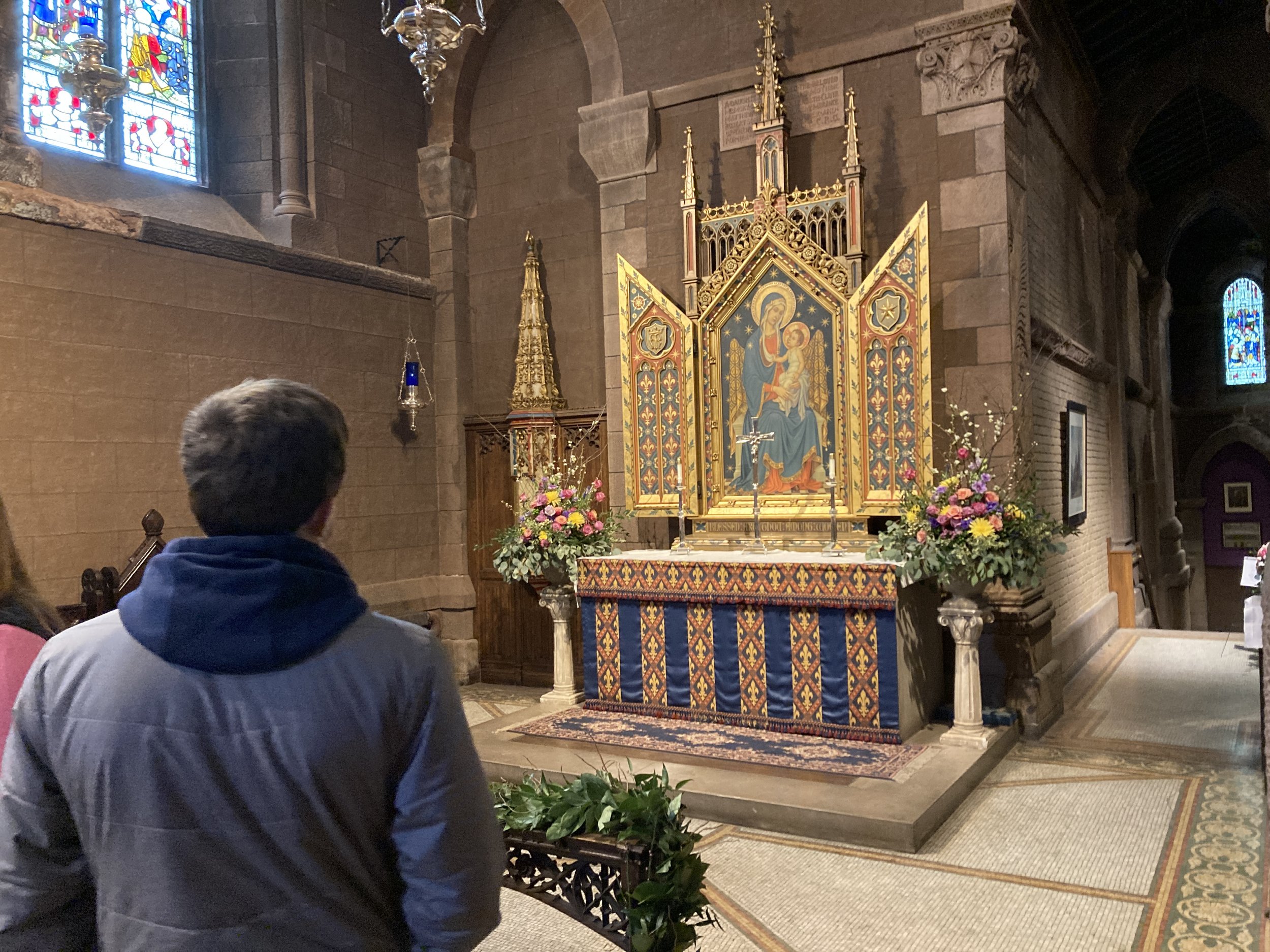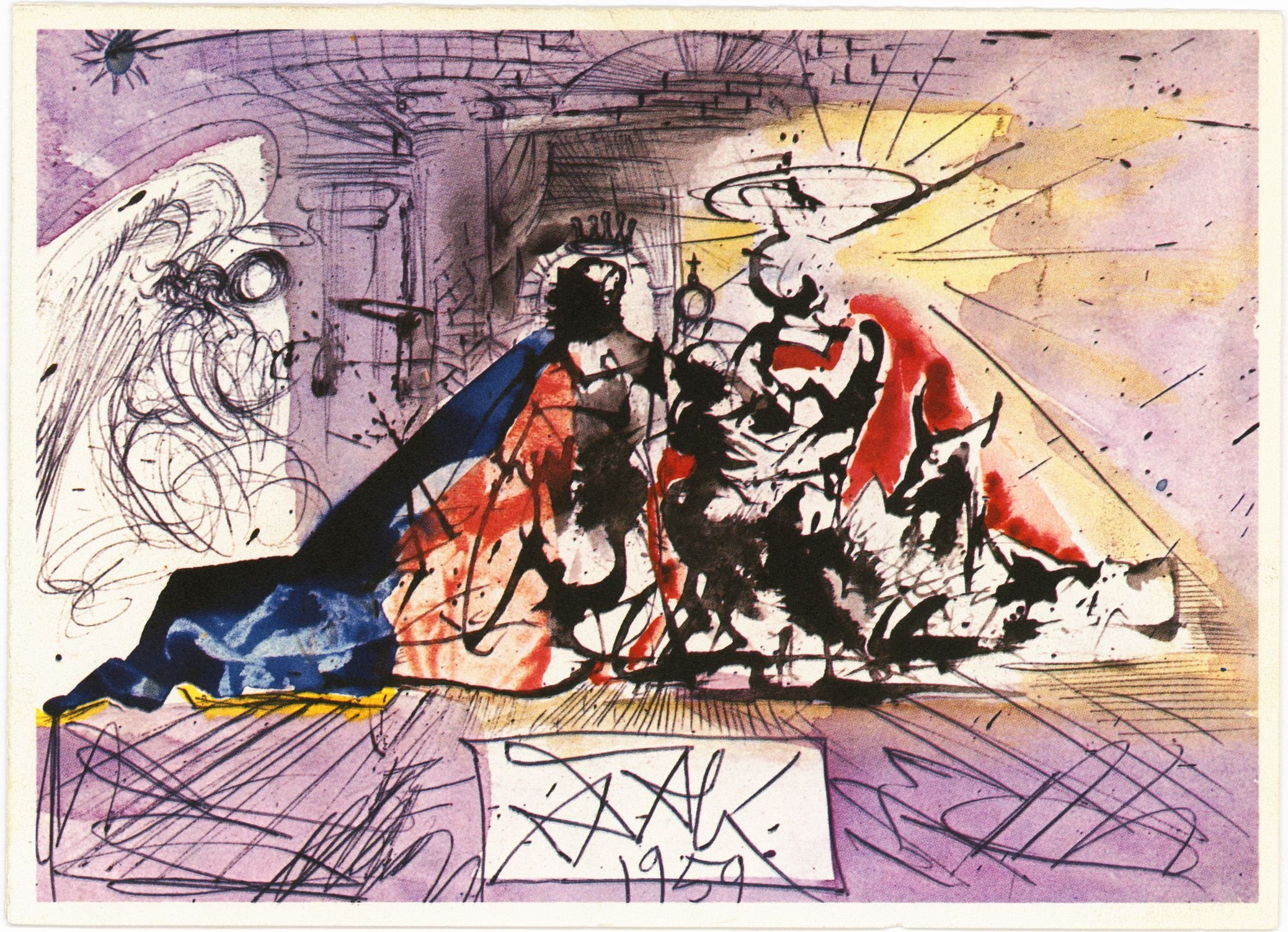Dear Cathedral Arts Blog Reader,
Please come along with me as I take you on an errand. At the end of October, I was admitted as an associate of the contemplative Episcopal Order of Julian of Norwich, and as part of my personal Rule of Life I have chosen to write about her and her work every year on her lesser festival day, May 8. This year the commemoration was transferred to today because it fell on Sunday, and was followed yesterday by the commemoration of Gregory Nazianzus, one of the Cappadocian Fathers, essential to the Church and more important to me for being the one after whom a Cathedral baby is named. So yesterday was Gregory’s day, and today is Julian’s day.
A commitment to a religious order is like a commitment to a family, church or vocation—it is a daily opportunity to give and receive and fail to do these things with regularity and be given the opportunity to try again. So be it. Trusting in the process is what allows writers to keep writing; trusting in the process is what allowed me to join others praying in the spirit of Julian; trusting in the process is why those of us who go to church stay in church even after we realize God is everywhere and there are a number of other places we could be. Trust in the process is what we have when we cannot see what the end result of our commitments will be.
Part of the recent interest in Julian of Norwich (1342-1413) has been that she lived during the Great Plague, was locked into the cell of a church, and yet lived a rich life through which she blessed others. Many wanted that when they saw in Julian the possibility of a good outcome of pandemic shutdown, or simply a way to survive it. I wrote a few blog posts about Julian during the shutdown which you can find HERE. My favorite contains Dr. Helene Scheck’s reading of a passage of Julian’s writing in Middle English.
After centuries of obscurity Julian’s work is now in the open and its irrepressible creativity gives greater birth to the Christian tradition preceding it. Her festival is in the height of spring, this year on Mother’s Day during Albany’s tulip festival in Washington Park. A child was doing cartwheels in front of Moses striking the rock in the midst of the tulips.
Linking my life-process with that of others, namely the life and work of this cathedral church and that of Mother Julian and her friends—as what you choose to live in process with……fill in the blank……your art, city, church, prayer routine, work, family and friends—makes a Rule of Life, whether or not we have ever written it down or thought to call it such. A Rule is like a trellis that supports our growth in the Kingdom of God as we live here, the Kingdom being likened to a vineyard in the Bible. (This is why grape vines appear throughout our Cathedral.)
A Rule of Life goes at least as far back as early monasticism. Augustine (354 –430 AD-CE) wrote a Rule for a group of nuns in Africa. From the time of Benedict of Nursia (480 – 548) and on through the Middle Ages, favoring Benedict’s Rule for how he conceived of a monastery like a family, monasteries flourished. They were not places for strange people who wanted to forget the rest of the world but became central, keeping time for a town by their bells, copying and illuminating books, providing a hospital and school, growing medicinal herbs, perhaps brewing beer and keeping bees as well as the offices—the cycle of prayer—and sometimes connected to a cathedral church.
The Dissolution of the Monasteries under Henry VIII in England in the first half of the 16th century plundered monastic communities which by then owned great wealth and were reported to often be corrupt. His archbishop sought to write a Book of Common Prayer condensing the offices into Morning and Evening Prayer so that people could pray like monastics within their own churches. On the north side of our Cathedral of All Saints, on Elk St., you can see the cloister and arcade in which to meditate as part of Bishop Doane’s vision for an English medieval cathedral in Albany. So we are in St. Alban’s chapel nearby on the first and third Mondays of the month saying Evening Prayer and having a contemporary discussion about other ways of prayer.
Monastics cared for the world around them, and still do today, by praying and working toward their vows of stability, obedience, and transformation (or conversion) of life—the qualities that families need to function well—and by offering hospitality to others who recognize that it is good to be affected by prayer and the wisdom gained in struggling with these things. To a greater or lesser extent, churches and cathedrals do this too, such as we have been by offering an educational series on prayer.
One of Julian’s prayers is, “God of your goodness, give me Yourself, for You are enough to me. I can ask nothing less that shall be full honor to You, and if I ask anything less, I shall always be in want, for only in You have I all.”
Julian of Norwich, the first woman known to write a book in English, begins with a domestic scene in which she receives her visions at age thirty while on her death bed. She seems to have written the “short text” of her Revelations of Divine Love soon after, and in the twenty-some years that transpire before she writes the “long text” she becomes an anchoress, locked into a cell at a parish “round tower” church on one of the busiest streets in Norwich where she offered spiritual guidance to visitors through a window.
Margery Kempe, also commemorated by the Episcopal Church, was one such visitor. Margery dictated what some consider to be the first autobiography in English. An irrepressible woman who had visions and conversations with God and was often on pilgrimage, Margery was often too much for others in how she outwardly expressed her faith. She was tried as a heretic by those weary of her many tears, preaching (which was forbidden to women), and wearing white like a nun after birthing fourteen children—the last of whom she seems to have brought or delivered on pilgrimage.
Margery reports that Julian affirmed the authenticity of her faith and visions but instructed her to "measure these experiences according to the worship they accrue to God and the profit to her fellow Christians." Julian’s teaching is like that of Paul writing to the Corinthians about speaking in tongues. These are the words of one who, though having near-death experience, life-altering visions, and the urge to tell others about God like fire in the bones despite her gender which limited her education and had long prayed over these things, had learned something about stability, obedience, and transformation of life, and was willing to offer it to others.
And so Julian is with us today, and Margery too and various and sundry characters as ourselves as we look through our window—our lens of the Cathedral and the Christian life and the creative history they represent—out into the world, and the world outside looks at the Christian life and the Cathedral and through this blog here, through Cathedral in Bloom, Evensong, festal services, other events and the conversations we have with those seeking God who come to us by a variety of ways. We are a witness that there can be stability through obedience to the call to seek God, and that thereby we may find further transformation of the life in God given to us through Jesus Christ.



















































